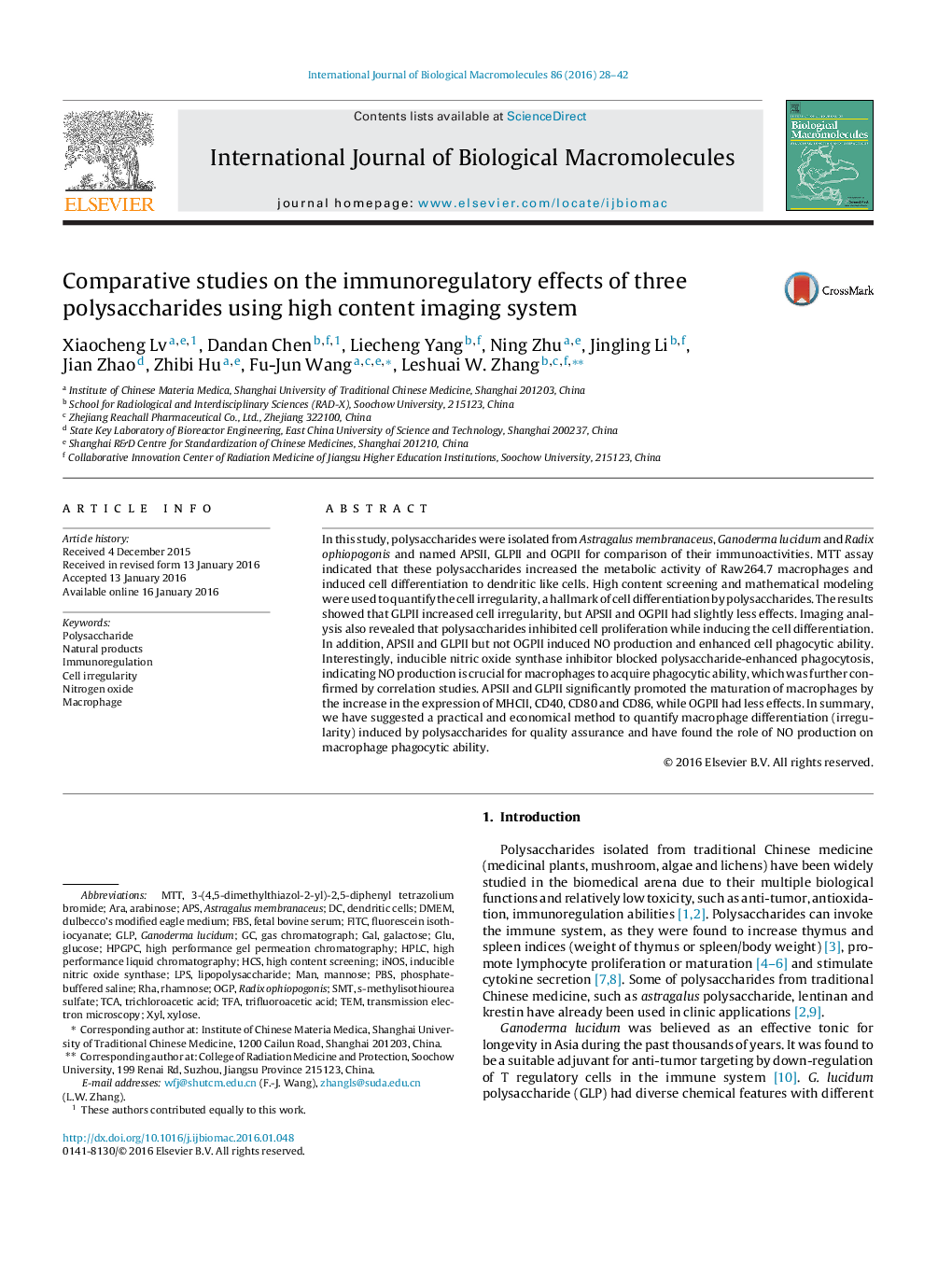| Article ID | Journal | Published Year | Pages | File Type |
|---|---|---|---|---|
| 1985873 | International Journal of Biological Macromolecules | 2016 | 15 Pages |
Abstract
In this study, polysaccharides were isolated from Astragalus membranaceus, Ganoderma lucidum and Radix ophiopogonis and named APSII, GLPII and OGPII for comparison of their immunoactivities. MTT assay indicated that these polysaccharides increased the metabolic activity of Raw264.7 macrophages and induced cell differentiation to dendritic like cells. High content screening and mathematical modeling were used to quantify the cell irregularity, a hallmark of cell differentiation by polysaccharides. The results showed that GLPII increased cell irregularity, but APSII and OGPII had slightly less effects. Imaging analysis also revealed that polysaccharides inhibited cell proliferation while inducing the cell differentiation. In addition, APSII and GLPII but not OGPII induced NO production and enhanced cell phagocytic ability. Interestingly, inducible nitric oxide synthase inhibitor blocked polysaccharide-enhanced phagocytosis, indicating NO production is crucial for macrophages to acquire phagocytic ability, which was further confirmed by correlation studies. APSII and GLPII significantly promoted the maturation of macrophages by the increase in the expression of MHCII, CD40, CD80 and CD86, while OGPII had less effects. In summary, we have suggested a practical and economical method to quantify macrophage differentiation (irregularity) induced by polysaccharides for quality assurance and have found the role of NO production on macrophage phagocytic ability.
Keywords
S-Methylisothiourea sulfateArabinoseTCAOGPTFAiNOSSMTFITCHCsFBSXylDMEMAstragalus membranaceusLPSHPGPCGLPPBSRHA3-(4,5-dimethylthiazol-2-yl)-2,5-diphenyl tetrazolium bromideAPsMTTTrifluoroacetic acidtrichloroacetic acidnitrogen oxideTemimmunoregulationARArhamnosefetal bovine serumDendritic cellsinducible nitric oxide synthaseNatural productsfluorescein isothiocyanatelipopolysaccharideMannoseMacrophagePhosphate-buffered salineManTransmission electron microscopyHigh content screeningPolysaccharidehigh performance liquid chromatographyHPLChigh performance gel permeation chromatographygas chromatographGalGalactoseGanoderma lucidumXyloseGluGlucose
Related Topics
Life Sciences
Biochemistry, Genetics and Molecular Biology
Biochemistry
Authors
Xiaocheng Lv, Dandan Chen, Liecheng Yang, Ning Zhu, Jingling Li, Jian Zhao, Zhibi Hu, Fu-Jun Wang, Leshuai W. Zhang,
